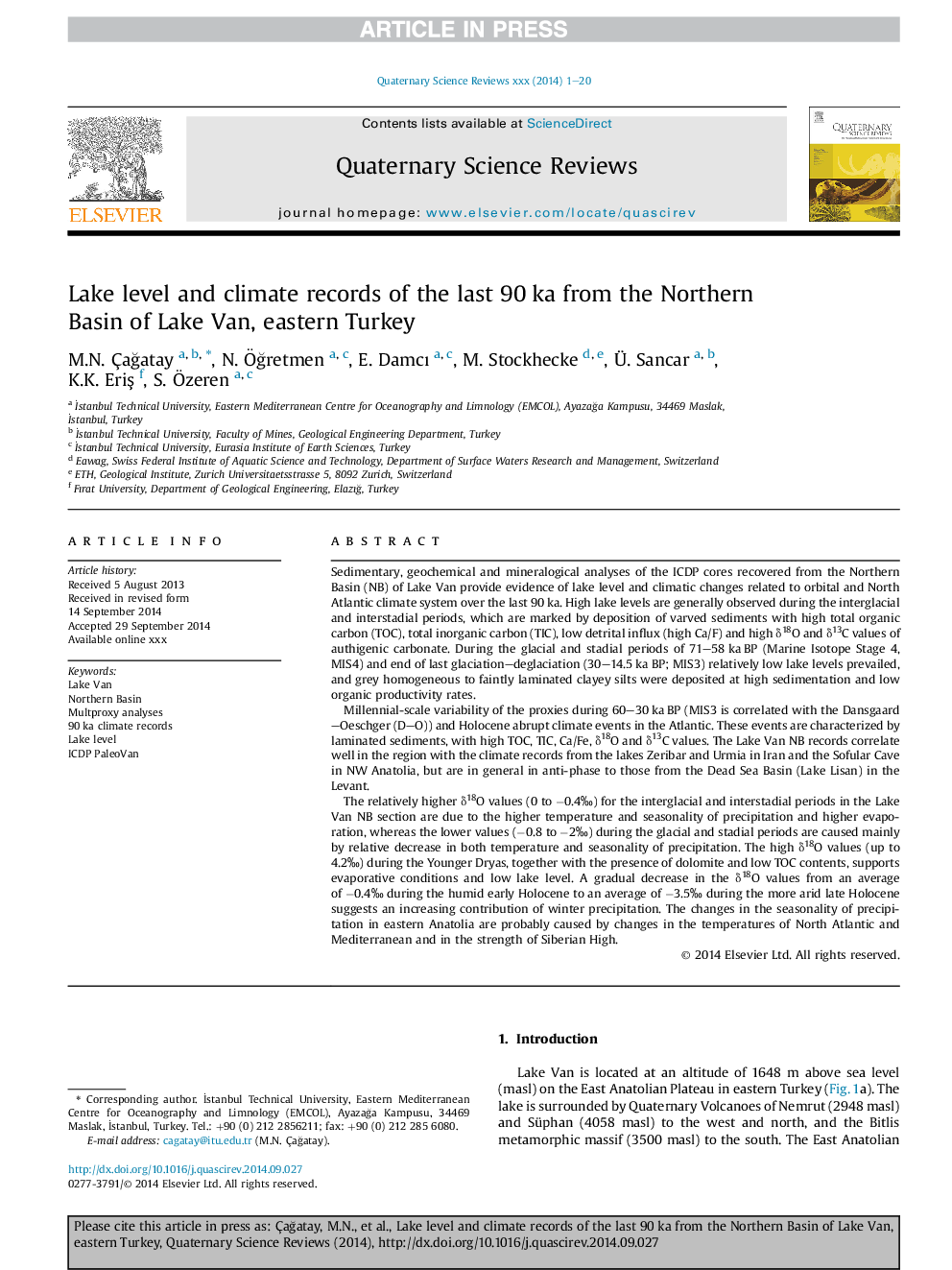| Article ID | Journal | Published Year | Pages | File Type |
|---|---|---|---|---|
| 6445552 | Quaternary Science Reviews | 2014 | 20 Pages |
Abstract
The relatively higher δ18O values (0 to â0.4â°) for the interglacial and interstadial periods in the Lake Van NB section are due to the higher temperature and seasonality of precipitation and higher evaporation, whereas the lower values (â0.8 to â2â°) during the glacial and stadial periods are caused mainly by relative decrease in both temperature and seasonality of precipitation. The high δ18O values (up to 4.2â°) during the Younger Dryas, together with the presence of dolomite and low TOC contents, supports evaporative conditions and low lake level. A gradual decrease in the δ18O values from an average of â0.4â° during the humid early Holocene to an average of â3.5â° during the more arid late Holocene suggests an increasing contribution of winter precipitation. The changes in the seasonality of precipitation in eastern Anatolia are probably caused by changes in the temperatures of North Atlantic and Mediterranean and in the strength of Siberian High.
Keywords
Related Topics
Physical Sciences and Engineering
Earth and Planetary Sciences
Geology
Authors
M.N. ÃaÄatay, N. ÃÄretmen, E. Damcı, M. Stockhecke, Ã. Sancar, K.K. EriÅ, S. Ãzeren,
